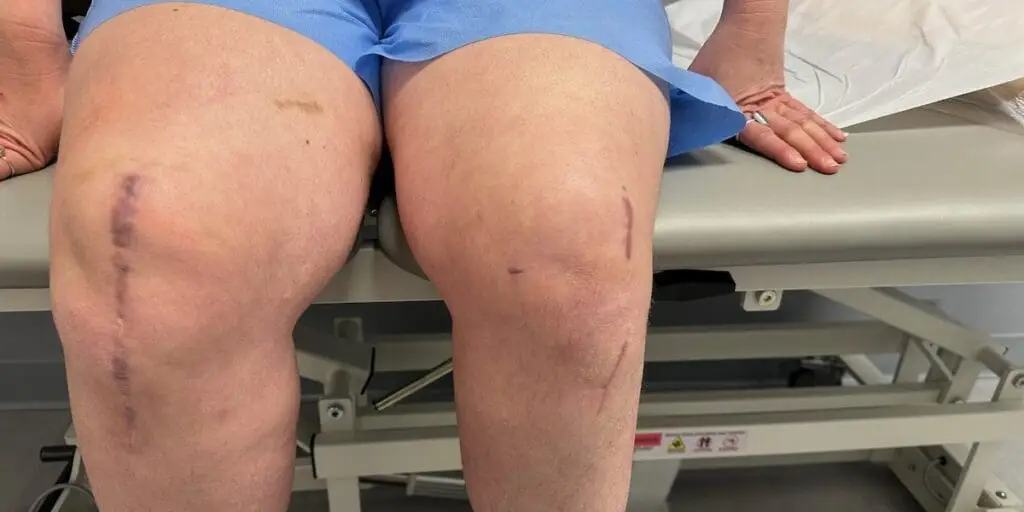Something I often discuss with patients before surgery is how long their knee surgery scars may actually be. In residency and fellowship, we are taught that the size and appearance of the scar doesn’t really matter.
Still, it’s something that I know patients think about when they look at their scar after surgery. I certainly hear patients commenting about their scar after they come back from physical therapy post-surgery, saying: “Wow, my therapist was so impressed by my scar!”
Well, what does it take to make a smaller scar? First of all, in order to do a less invasive surgery, I think that you have to have considerable experience doing that type of surgery. It’s certainly easier to make a much longer scar, and one can potentially visualize the problem more easily if you create a massive incision.
However, patients can recover a lot more quickly with a less invasive surgery.
Over the past 20 years, there has been a focus on minimally invasive surgery. Partial and some total knee replacements are now done with a robot in an effort to make them less invasive. Certainly for surgery such as MPFL reconstruction, tibial tubercle osteotomy, and cartilage transplants, as well as ACL reconstruction, I have really tried to make surgery less invasive and the recovery faster.
I’m sharing a photo of the surgical scar for one of my patients next to another, more invasive surgical scar so you can see the difference.

